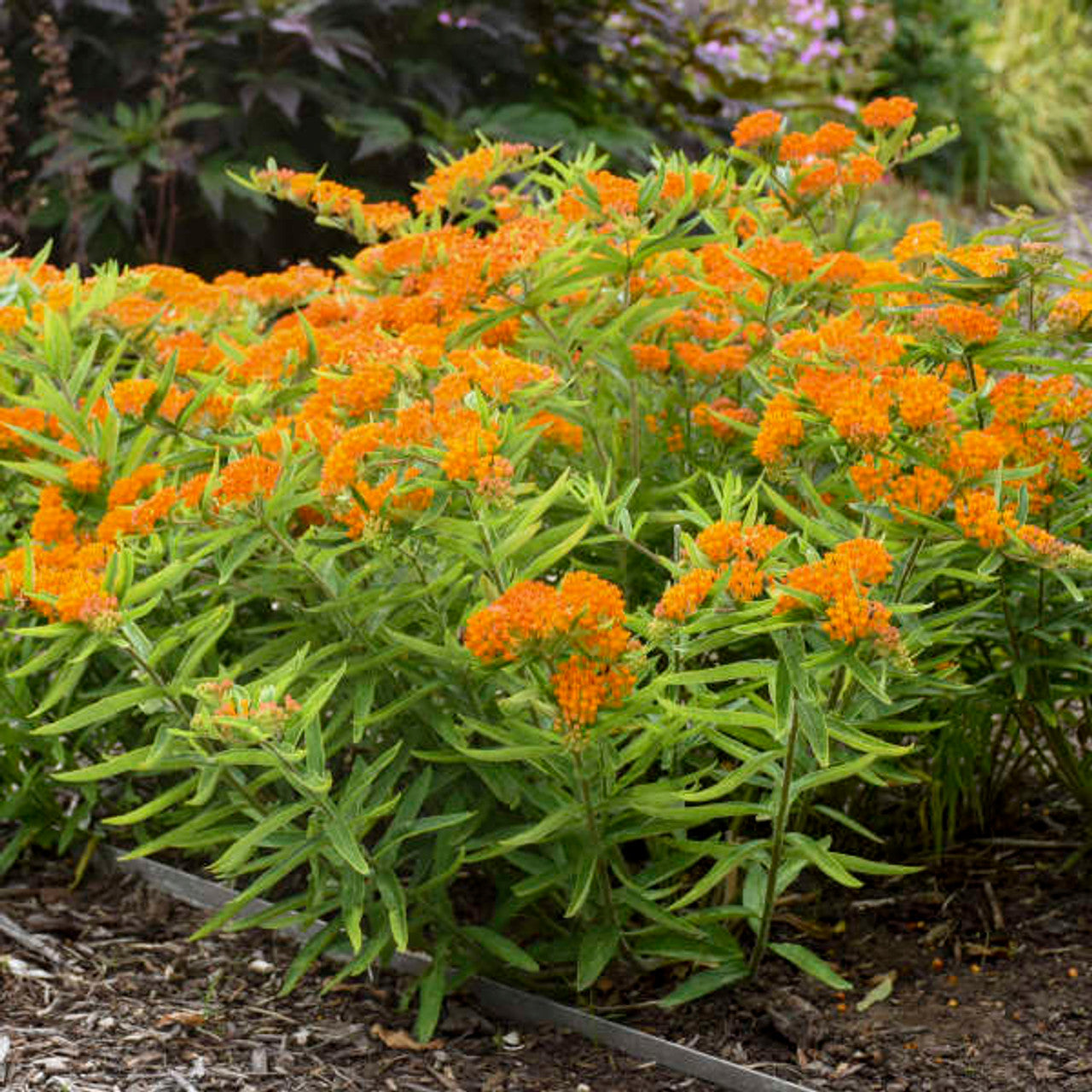
Butterfly Weed
Butterfly Weed (Asclepias tuberosa) is one of the most colorful native perennials you can add to the garden. Blooming in early summer through mid-summer, it’s covered with showy flowers in bright orange to reddish-orange shades that are loved by butterflies, bees, and other pollinators. It’s native across most of the United States, and because it’s extremely hardy and adaptable, it’s easy to grow in most areas.
Is Butterfly weed a popular plant?
Butterfly Weed is one of the showiest milkweeds, and it’s one of the most popular too. It features clusters of flat flowers, similar to the flowers of other milkweeds, and slender lance-shaped leaves that help distinguish it from the other species. It has branching stems, rather than the single upright stem of some species, and is compact and bushy in form. The stems are typically 1-3′ tall, depending on growing conditions. The flowers are long-lasting and followed by narrow seed pods in late summer to fall that split open to release silky parachutes on the wind in late summer to fall.
Do monarch butterflies feed on Butterfly weed?
Monarch caterpillars can feed on Butterfly Weed, just like they can on other milkweed species. Adult monarchs and other butterflies, as well as native bees, wasps, and hummingbirds, will be happy to stop at this plant for a sip of nectar from its brilliant flowers. So by planting Butterfly Weed, you are directly helping monarch butterflies and other pollinators.
Butterfly Weed is extremely hardy, very drought-tolerant once established, and low-maintenance, and will thrive in full sun and well-drained soils, including sandy or rocky sites. It has a deep taproot, so it resents being transplanted, and is best planted where it can stay. This taproot also makes it very drought-tolerant, so once it’s established, it needs little to no supplemental watering. It will form dense clumps of branching stems that typically come back stronger each year and may even spread with time.
Is Butterfly weed deer resistant?
Butterfly Weed is deer resistant, and its cheerful orange flowers look wonderful planted with other sun-loving natives, like purple coneflower, blazing star, black-eyed Susan, and wild bergamot. It’s a great addition to mixed plantings, where it will add a bold pop of color and provide nectar and habitat for pollinators and other beneficial insects. Plant it in mass or as a single specimen, and it will make an excellent focal point.
Butterfly Weed’s adaptability to poor soils and drought means it’s a perfect choice for low-water gardens, pollinator meadows, and roadside plantings, as well as for sunny borders. It will give you months of bloom, vibrant color, and high pollinator activity, with little effort on your part. Butterfly Weed is one of the most popular native perennials for a sreason: it’s a winner.




